Darwin’s Mocking-Thrushes
The Mockingbirds of the Galápagos
I’m just back from my week in the Galápagos Islands onboard the marine yacht Integrity. With great weather, an exceptionally hard-working crew, Richard Polatty as our naturalist guide (who must be the best in the Galápagos), and a superb group of participants, I can’t imagine a better trip. Though I haven’t been on a lot of boats, this was by far the nicest one I’ve ever seen – and apart from the birding and the experience of just being in these islands, our accommodations for the week were at the top of everyone’s favorite part of the tour.
Among the bird highlights was seeing all four species of mockingbirds endemic to the islands, and I thought I would show some of the images I managed to get – only one digiscoped with my Zeiss Fieldscope, the rest hand-held with my 3.8 X Canon PowerShot S90.
All are amazingly tame, some going beyond mere fearlessness to bold curiosity (hence my being able to get good snapshots with such a low zoom). Our first was this Espanola Mockingbird (Mimus macdonaldi), named after the one island on which it occurs. Its characteristics are the notably pale head, strong malar streak, and a very long, curved bill (which it is using to dig in the sand here). This is the one mockingbird that Darwin did not see, as he did not land on this island.
We also saw Floreana Mockingbird (Mimus trifasciatus), which is actually now extirpated from Floreana Island and exists on a couple islets offshore. Given that we got views only while sitting in the zodiac as we approached the satellite island of Champion (though very good views), I wasn’t able to get a photo of this distinctive species with its dark head and white neck.
These next three mockingbirds are the same species – the multi-island occurring Galapagos Mockingbird (Mimus parvulus) — but they do differ slightly from island to island.
This one from Fernandina Island has a relatively unstreaked back (which may actually indicate that it is a young bird) and short bill.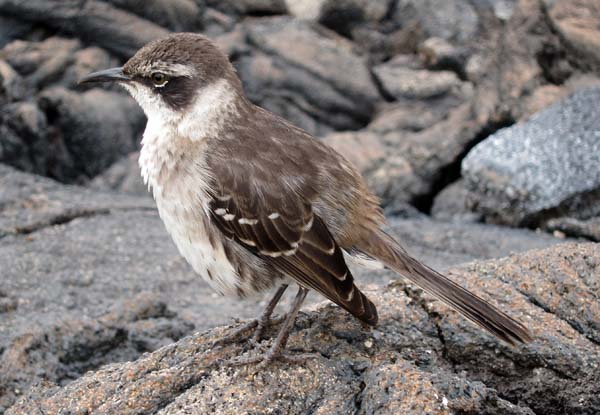
This one is from Santiago Island is very similar and is considered to be the same subspecies. It seems to have a slightly larger bill.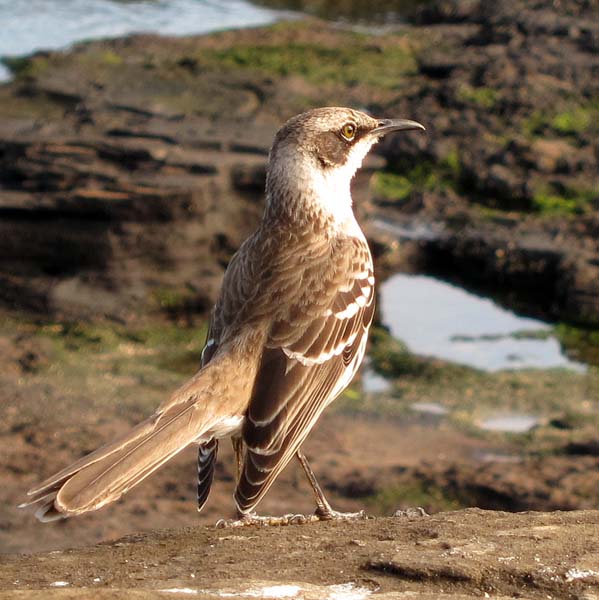
But the Galapagos Mockingbird from distant and tiny Genovesa Island belongs to the subspecies M. p. bauri. The back is very streaked, the bill quite hefty, the wings more brightly edged white, and the eye darker.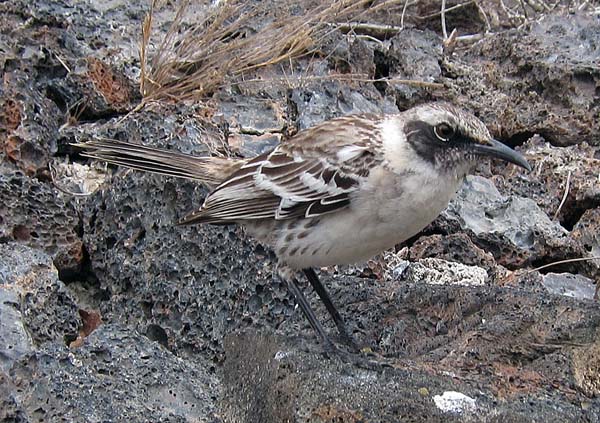
Our final species was the San Cristobal Mockingbird (Mimus melanotis). We made a special effort to see this one, since our boat did not visit San Cristobal Island. On the last day of the tour we hopped on to a boat taxi which sped for 2 hours across the 48 miles from Santa Cruz Island and hired a guide and driver to take us around. The mockingbird was especially easy to find at the tortoise breeding enclosure near Puerto Chino. Note the brown eye, relatively unstreaked back, and the prominent malar streak. The bill is also hefty by quite short.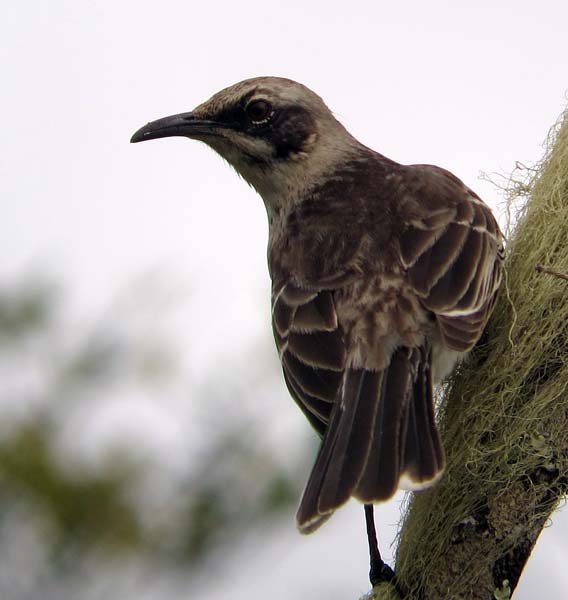
Over the next days I’ll be posting a wider range of photos over at my Birdernaturalist Blog. See you there.

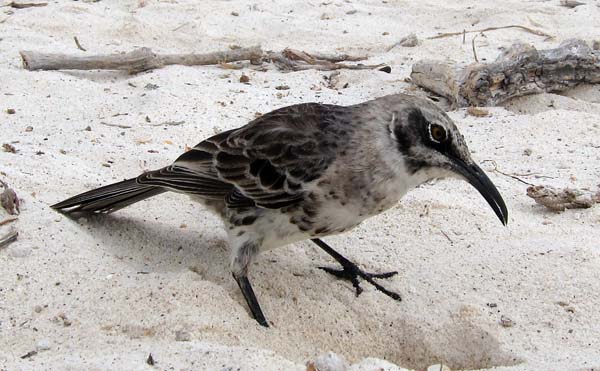
Great post! Those cheeky beggars on Espanola are among my favorites. Last time I was in the Galapagos in 2007, I did manage some shots of the Floreana Mocker from our little zodiac, bobbing about off Champion Island, but the photos are nothing to write home about.